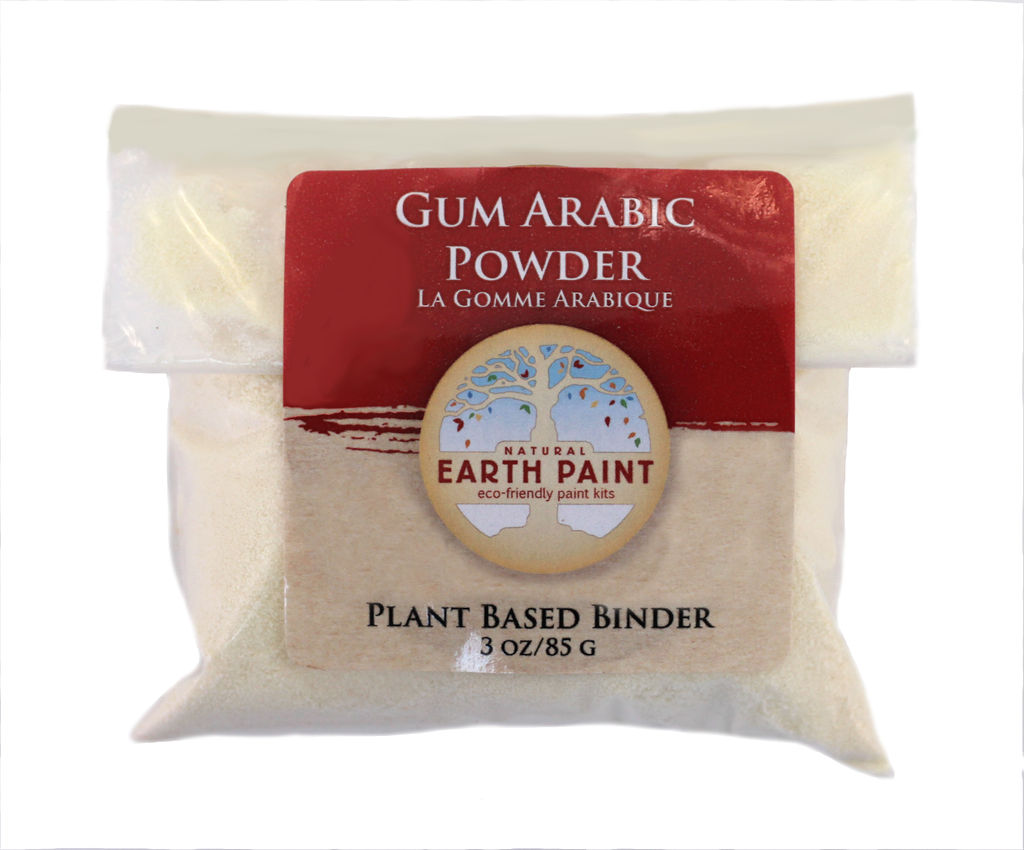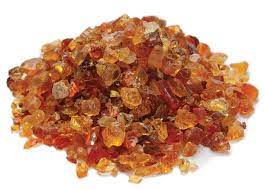In the vast arid regions of Africa and the Middle East, the resolute acacia tree stands as a testament to nature's ability to thrive against the odds. Hidden within its bark is a unique substance that has captured the attention of industries spanning from food to art: gum arabic.
This natural marvel has a rich history, a plethora of applications, and an array of benefits, making it a versatile and eco-friendly option for modern consumption. Let us embark on a journey to explore the origins, uses, and significance of gum arabic, uncovering its role in the world of art and its contributions to a more sustainable future.

From the Acacia: Unveiling the Origins of Acacia Gum
Gum arabic, also known by various names like acacia gum, gum acacia, senegal gum, and Arabic gum, originates from the sap of specific species of acacia trees, notably Acacia senegal and Acacia seyal. The Acacia senegal and Acacia seyal are hardy acacia trees that thrive in the dry landscapes of Sudan, Chad, Nigeria, and neighboring regions. Indigenous cultures of West Africa and the Middle East have cherished Acacia senegal and Acacia seyal trees for centuries, integrating its gum into their daily lives for various practical, medicinal, and cultural purposes.
Extraction: A Delicate Process
The extraction of acacia gum from the Acacia senegal tree is a labor-intensive endeavor that taps into the inherent resilience of the acacia. To harvest this natural treasure, the tree's bark is carefully incised, allowing the sap to flow out.
Upon exposure to air, the sap hardens, forming distinct pieces that are then collected and prepared for various applications. This traditional extraction process showcases the intricate relationship between humans and the natural world.

Versatility Unleashed: The Myriad Uses of Arabic Gum
Traditional and Culinary Applications
Gum arabic's versatility has not gone unnoticed by indigenous cultures and modern industries alike. Historically, it played a role as a binder and thickening agent in traditional recipes, enhancing the texture of foods and beverages. Its soluble dietary fiber content made it a gentle remedy for digestive issues, aligning with the wisdom of generations.
Modern Marvel in the Food Industry
In the contemporary world, acacia gum has solidified its position as a valuable ingredient in the food industry. Like xanthan gum, its properties as a form of soluble dietary fiber render it a potent thickening agent, stabilizer, and emulsifier.
Soft drinks, gummy candies, chocolate candies, chewing gum, and even baked goods owe their consistent textures and appearances to gum arabic. Unlike its synthetic counterparts (such as xanthan gum), gum arabic's natural origins make it a healthier and eco-friendly choice for health conscious shoppers.

Unlocking the Health Benefits of Gum Acacia
Digestive Health and Dietary Fiber: Lipids, Health, Dis-ease Reduction
The gift from the Acacia senegal tree extends from culinary delights to a plethora of health benefits. Acacia Gum boasts a significant content of dietary fibers, particularly soluble dietary fiber. If you are taking gum arabic, this soluble fiber becomes nourishment for beneficial gut bacteria, leading to the production of short-chain fatty acids or lipids. These fatty acids play a pivotal role in maintaining a healthy digestive system, a low body fat percentage, healthy body mass index and overall well-being.
Cholesterol Management and Blood Sugar Regulation
Research suggests that gum arabic may hold promise in managing cholesterol levels. By binding to bile acids, it contributes to the excretion of excess cholesterol, resulting in potential reductions in total and LDL cholesterol. Moreover, gum arabic's ability to slow the absorption of carbohydrates has implications for stabilizing blood sugar levels, making it an ally for individuals with diabetes.
Exploring Gum Arabic in the Art Industry
A Brush with History
Artistic expression has been intertwined with gum arabic for centuries. In the realm of art, it serves as a binding agent for pigments, contributing to the creation of vibrant watercolors. Through the ages, artists have harnessed gum arabic's adhesive properties to elevate their creations, adding depth and luminosity to their works.
Artistic Techniques and Effects
The impact of gum arabic on art is transformative. In watercolor painting, its inclusion enhances the fluidity of pigments and their adhesion to paper, enabling artists to craft delicate layers and radiant washes. Additionally, gum arabic empowers artists to infuse their works with controlled textures, a hallmark of mastery and creativity.
Elevating Traditional Practices
The resurgence of interest in traditional artistic methods has given gum arabic a new stage to shine upon. Watercolorists, illustrators, and calligraphers are embracing gum arabic as an indispensable tool for creating stunning works of art. By using it as a binder for pigments, artists can achieve vibrant color gradients, subtle washes, and intricate details that capture the essence of their subjects. If you are an eco-friendly artist, you can buy gum arabic powder online from Natural Earth Paint Canada.

Embracing Eco-Friendly Creativity
Gum Arabic: A Sustainable Choice
In an era where environmental consciousness is paramount, acacia gum emerges as an eco-friendly option for artists. Its renewable source and biodegradability make it a responsible alternative to synthetic binders. Artists who opt for gum arabic align their creative pursuits with sustainable practices, minimizing their ecological footprint while producing stunning artworks.
Reviving Traditional Techniques
In a digital age, the revival of traditional artistic techniques is a nod to heritage and authenticity. Gum arabic's resurgence speaks to this desire for connection with artistic history. As artists revisit watercolor and other traditional mediums, they also revive the age-old wisdom of using gum arabic as a binder, fostering a dialogue between generations.
Innovations and Creative Exploration
Beyond Boundaries: Innovation in Art
Gum arabic's role in the art world is not confined to traditional techniques. Today's artists are embracing interdisciplinary collaborations and experimental approaches.
Gum arabic's adaptability lends itself to collaborations between artists, graphic designers, and illustrators. When integrated into digital prints and mixed-media works, it adds texture and depth, blurring the line between analog and digital.
Unleashing Creative Potential
Gum arabic's presence in the art industry is a testament to its capacity to catalyze innovation. Mixed-media artists are discovering its potential as a versatile element in their creations. By combining gum arabic with various media, such as ink, acrylics, and even digital elements, artists create multi-dimensional pieces that challenge traditional definitions of art.
Preserving Traditions and Forging Ahead
Art's Timeless Connection
Gum arabic's enduring significance in the art world underscores the timeless connection between creativity and nature. As artists reach for this ancient binder, they engage in a tradition that spans continents and centuries. The act of mixing gum arabic with pigments is a nod to the artists who came before, a tribute to their techniques and innovations.
Challenges and Promising Horizons
Harvesting, Quality, and Future
While acacia gum brings a plethora of benefits to the table, challenges persist in sourcing and maintaining consistent quality. Innovations are underway to enhance extraction techniques and ensure sustainable harvesting practices.
As gum arabic continues to captivate the world, efforts are being made to ensure its availability for future generations.
Conclusion: A Gift of Nature's Ingenuity
The journey of gum arabic from the tree to its various applications underscores the symbiotic relationship between nature and human innovation. From culinary delights to artistic endeavors, gum arabic's versatile nature has contributed to diverse industries.
As we appreciate its historical significance, marvel at its health benefits, and explore its role in the art world, let us remember acacia gum as a remarkable testament to the creative potential of nature. This simple sap has bridged cultures, industries, and generations, reminding us of the magic that lies within the heart of the acacia.


 naturalearthpaint.ca
naturalearthpaint.ca